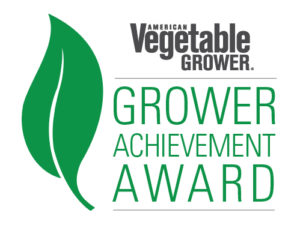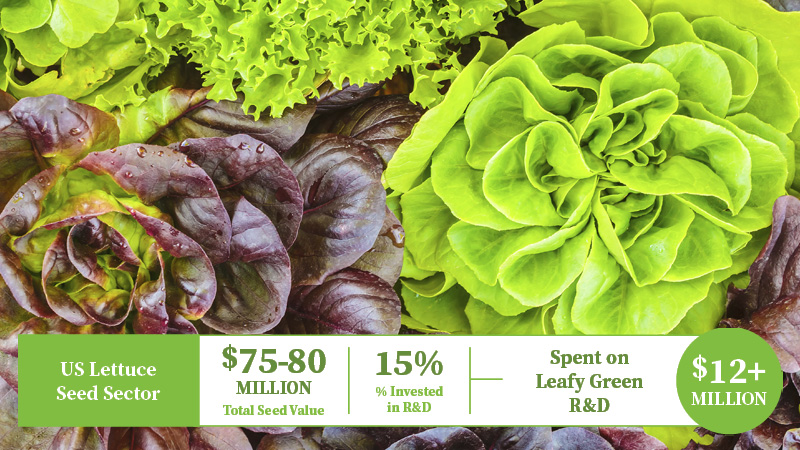How Smith Farms Company and Its Leader Win Big by Being Water Wise
When you know how to prioritize, it can be a superpower. Take this year’s National Winner of the prestigious American Vegetable GrowerSM Grower Achievement Award, Mark Smith. By Yuma, AZ, standards, his Smith Farms Company is small at only 1,500 acres. But he quickly recognized how dependent one of America’s most important growing regions was on a single source of water.
“It’s a finite resource,” Smith says. “And it is less than it used to be.”
That simple realization sparked his determination to do something about it. The only problem? There was, and is, no obvious answer.
So he set out to figure out what needed to be done, unaware that single decision would propel him through years of tenacious study and actions that are still transforming winter growing in the Yuma Desert.
Gaining Political Influence
The series of steps Smith has taken in addressing water have been both logical and profound.
Step one? He needed to know everything he could about water availability and how the system worked.
Within three years of starting up Smith Farms in 1980, he was elected to the Yuma Irrigation District, eventually acting as President starting in 1994, a position he still holds today. He also serves on the Imperial Dam Advisory Board (the last diversion dam on the Colorado River) and served Arizona’s former Gov. Doug Ducey on his Augmentation, Innovation, and Conservation Council (formerly Water Augmentation Council), which deals with the state’s water policy.
“The biggest political challenge is dealing with the shortages on the Colorado River and how that is going to be addressed,” Smith says.
Many states depend on the Colorado River, he says. How do you fairly address how much water each uses?
There are seven Colorado River Basin states: three Lower Basin states (Arizona, California, and Nevada); and four Upper Basin states (New Mexico, Colorado, Utah, and Wyoming).
“[Water rights are] a very complicated process,” Smith says. “The biggest challenge is it was allocated in a very wet year in the early 1900s. And now we’re in the driest period in 1,500 years.”
Then there is the city vs. agriculture dilemma. Generally, agriculture has senior water rights, with cities claiming junior rights. That means during shortage years, cities need to take cuts first, then agriculture. But cities have grown significantly since those rules were made.
“You can see the conflict there,” Smith says.
The needs of less populated areas like Yuma cannot be reduced to a simple comparison of how many people need water.
“The Yuma area grows winter leafy green vegetables that supply 80% of the nation for six months out of the year. We have significant importance to 340 million people,” he says.
Another nuance? Yuma growers depend on its single water source, while cities like Phoenix have other sources for water.
Conserving Water
Armed with what he learned about water policy, Smith focused on how to conserve water so Yuma farms could protect its finite water resource. He and his Yuma peers implemented water saving irrigation methods where they made sense.
Over the years, Yuma has adopted irrigation practices, cultural practices, crop changes, technology, restructured irrigation districts, conducted research, and more. Today, Yuma is one of the most water efficient growing areas nationally.
 “We left a significant amount of water available for the rest of the state to use because of our efficiencies. But you should use that as a buffer, and not make a permanent demand on it,” he says.
“We left a significant amount of water available for the rest of the state to use because of our efficiencies. But you should use that as a buffer, and not make a permanent demand on it,” he says.
Water availability can be capricious, after all. And production needs can change over time.
“The common belief was if agriculture just got efficient, then there would be plenty of water in the system,” Smith says.
But that is true only to a point, Smith says.
To hammer out solutions politically, Smith knew he needed to quantify how much of a difference the cultural practices he and other Yuma vegetable ranches implemented affected water usage.
“But how do you measure that?” he asks. “We commissioned studies: the Yuma Area Agricultural & Water Study, which took two years, and the Yuma Area Water Salinity & Salt Balance Study, which was a six-year project.”
Comparing the studies’ results and irrigation district records back to 1970, they made some major discoveries. Fifty years ago, Yuma growers grew water-intensive crops with just one planting for the season.
“We’ve almost doubled the acres of crops grown, due to double cropping, and therefore almost doubled our productivity. We increased our economic value by 700%. And we lowered our overall water usage 15% to 17%,” Smith says.
The region is now one of the most sustainable in the country. But with the lower irrigation amounts, salinity became a problem.
Salinity builds up in Yuma’s desert soil easily due to the river.
“We get about 2,000 pounds of salt per acre-foot of water,” Smith says.
Traditionally, the way to handle it is through leaching, allowing extra water pre-irrigation to push salt down well below root zones.
Since the area needed reliable research to figure out how to address salinity and still remain water efficient, Smith helped found the Yuma Center of Excellence in Desert Agriculture (YCEDA).
YCEDA is an unusual public/private partnership between members of the agricultural industry and the University of Arizona College of Agriculture, Life, and Environmental Science. Local industry people make up the majority of the board, provide funding, and guide the research. That research addresses the pressing issues of desert agriculture.
YCEDA has completed a major salinity study, which examined the application efficiency, mitigation, and management of salt in desert soils. A feather in growers’ caps is that researchers found Yuma’s agricultural industry operates with 80% to 90% application efficiency. Those results have guided growers to practices that help them irrigate their crops in a way that both maintains yield and conserves water.
Nabbing High-Powered Broadband
All this research and cutting-edge practices need reliable data. Today, that means quality technology like soil sensors, unmanned and automated equipment, and cloud-based information sharing, documentation, databases, and traceback. The only problem? Quality broadband support systems are hard to find in rural areas.
It’s a problem the entire agriculture sector is facing. We need high-end technology to help address labor shortages, conservation goals, and other challenges, but we don’t have the infrastructure to support those efforts.
So Smith got to work again, leveraging his connections with government figures and policymakers.
“We received support for funding from Governor Hobbes, former Governor Ducey, and the Yuma County Board of Supervisors,” Smith says.
As a result, Yuma is in the process of getting the best broadband available in the nation’s growing regions. The “middle mile” of the area, the backbone of the system, will be in place by January 2025. Each new section build will tie into the middle mile.
“This will be the biggest, most robust wireless system in agriculture that exists in the world, covering 160,000 acres,” Smith says.
The system is built for flexibility and for agriculture, where typical broadband is not enough.
“We generate data in the field,” Smith points out. “That data goes up to the cloud, and it sends a solution back.”
It’s a two-way system for data exchange, requiring a symmetrical system. And if smart ag is going to technology-driven data, it needs a reliable, exclusive system.
“Nobody else will be on our system except agriculture,” Smith says.
It’s going to give growers the reliability and capacity to trial new solutions. And it gives ag tech companies a region to try out their most ambitious goals.
At a Glance: Smith Farms Company
Year founded: 1980
Owner: Mark Smith
Size: 1,500 acres
Crops Grown: Winter vegetables, leafy greens, herbs, Durham wheat, and Sudan grass.
Customers: Contract grower for Nunes Farms/Foxy Fresh Produce






















